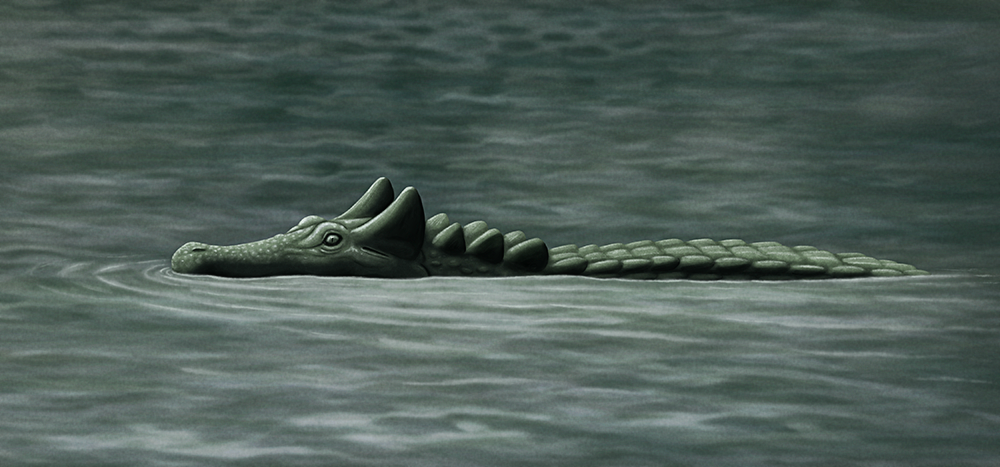“Horns” seem to have convergently evolved multiple times in crocodiles over the last few million years, including in a couple of living species. These triangular crests are formed from the squamosal bone, just above their ears, and tend to be a sexually dimorphic feature used in territorial displays between males, serving to make them look bigger when they arch their necks.
But there’s another horned crocodilian known from much earlier in the Cenozoic – and this one was an alligator!
Ceratosuchus burdoshi lived in Colorado and Wyoming in the western United States during the late Paleocene and early Eocene, about 57-56 million years ago. It was a fairly small alligator, around 1.7m long (5’6″), with a broad snout featuring sharp teeth at the front and blunter teeth further back – an arrangement that suggests it was a generalist predator eating a variety of small prey, using those teeth to first grab and then crush whatever it managed to catch.
It also had large blade-like osteoderm armor on the back of its neck, which may have been arranged in line with its “horns” to make its visual displays look even spikier.


